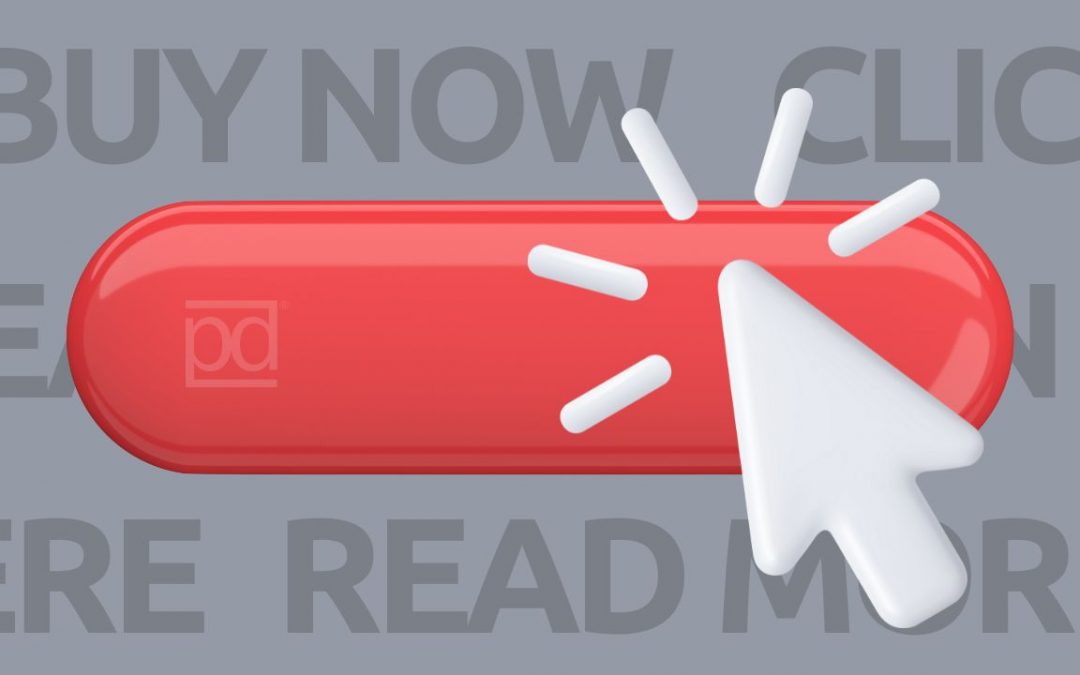When creating a marketing campaign you should always start with a S.M.A.R.T. Goal that you can keep in mind. If you aren’t sure how to create a S.M.A.R.T. Goal – don’t worry we got you covered. The goal of any marketing material is to have your customer or potential customers take some form of action. This could be downloading an ebook, buying your product, or signing up for a course or event for example. However, without a strong CTA, or call-to-action, it’s difficult to get them to do anything! Let’s back up for a second to what CTAs even are.
What are CTAs (Call-to-Actions)?
CTA is essentially a cue or invitation given to users to take a specific action. They are designed to drive user engagement, conversions and desired outcomes. Call-to-actions can vary from ‘soft sells’ such as encouraging users to learn more, to ‘hard sells’ like making a purchase. Regardless of what the action is that your CTA conveys, generally, they are visually distinct from other texts. Some of the most common formats for CTAs include buttons, links and banners. Having them stand out makes it an easier journey for users as they know what you want them to do next. Hidden or non-existent CTAs can lead to a confusing customer journey or even ultimately lead to them selecting a competitor over your brand as the action is too hard to complete.
Maybe you’re asking yourself but where do I put them? Well, in a general sense place them wherever you want a user to take a specific action. This may be your website, landing pages, social media posts, email campaigns, and even blog posts. However, when doing so it is also important to remember to use different CTAs at different stages of the marketing funnel (need a quick refresher on the marketing funnel? Check out our blog that breaks it down). For example, the CTA you will use in the awareness stage would most likely be something like “Learn More.” However, when your audience has moved to the Consideration stage “Download the eBook” may be more suitable. In the Conversion stage, “Shop Now” would be suitable. Now that we’ve covered the basics of CTAs, it’s time for some tips to get you started off on the right foot!
Tips to keep in mind as you craft your CTAs:
- Keep it short – CTAs are typically around 2-5 words, short phrases that are direct and to the point. They clearly communicate what action you want the user to take next and avoid complex jargon or sentences that may confuse.
- Use action words/phrases – action words are more likely to compel your audience into immediate action. Avoid passive tones that may get overlooked.
- Create a sense of urgency – Urgency should be used only if it is genuine! For example, “limited time offer” will ensure users claim the offer now rather than waiting. However, if used incorrectly it is quick to decrease trust and credibility with your audience.
When should you use CTAs?
CTAs should be strategically used in various marketing materials and touch-points to guide users toward specific actions that align with your business goals.
These are a few examples in which you can use CTA:
- Website Landing Pages: Place CTAs on your website’s landing pages to guide visitors toward taking actions that align with your objectives. For example, on an e-commerce site, CTAs like “Shop Now” or “View Products” can direct users to your product catalog.
- Blog Posts and Articles: Insert CTAs within blog posts and articles to encourage readers to explore related content, sign up for newsletters, or download additional resources.
- Product Pages: Use CTAs on product pages to prompt visitors to add items to their cart, make a purchase, or learn more about a product’s features and benefits.
- Email Marketing: Incorporate CTAs in your email campaigns to drive recipients to your website, special offers, or other conversion points. For example, you can include CTAs like “Click to Claim Your Discount” or “Read the Full Article.”
- Social Media Posts: Include CTAs in your social media captions or comments to guide users toward actions such as liking, sharing, commenting, or visiting your website.
BONUS: Powerful Call-to-Action Phrases to Help Boost Conversions
- Shop Now: Encourages immediate action for making a purchase.
- Get Started Today: Prompts users to take the first step in a process.
- Unlock Exclusive Access: Suggests that valuable content or benefits await those who take action.
- Download Your Free Guide: Offers a valuable resource in exchange for action.
- Join Our Community: Invites users to become part of a larger group or network.
- Claim Your Discount: Emphasizes a special offer or price reduction.
- Subscribe for Updates: Encourages users to stay informed about your offerings.
- Reserve Your Spot: Appeals to users interested in attending an event, webinar, or workshop.

